The Hyundai Kona Electric is a fascinating EV. In the last two years, Chinese brands have undercut a segment of the market that Hyundai (and fellow Korean brand Kia) would otherwise be dominating weren’t it for high EV development and manufacturing costs. While the cheapest EV you’ll find in Australia from a Chinese brand, the GWM Ora now starts at $36,000, the cheapest non-Chinese EV in Australia, the Nissan Leaf, starts at $50,990, and just a short walk from that price is the 2024 Hyundai Kona Electric, at $54,000.
At that price, the Kona Electric is the cheapest it has ever been in Australia, which is undeniably a good thing. Making EVs more accessible to more people is where we should be headed. The car has always represented the ‘cheap’ end of Hyundai’s electric portfolio, in tandem with Kia’s ‘Niro’ EV, with both cars sharing platforms with combustion engine models – but I feel as if it doesn’t push the envelope enough, compared to the Chinese EVs that are here now.
The parallel we draw between this car and its Chinese rivals is that they are more affordable EVs than most, but the Kona Electric is more expensive than almost anything out of China, and with little value to show for its higher price. I commend Hyundai for cutting its prices progressively, which it has done for the higher-end ‘Ioniq’ range recently as well, but it’s difficult to call this car a value option. At least not its base trim, that is.
But we don’t need to get bogged down in negativity. I can celebrate aspects of the Hyundai Kona Electric that appealed to me. So to test the Kona EV out I took it on a road trip from Sydney to Canberra and back.
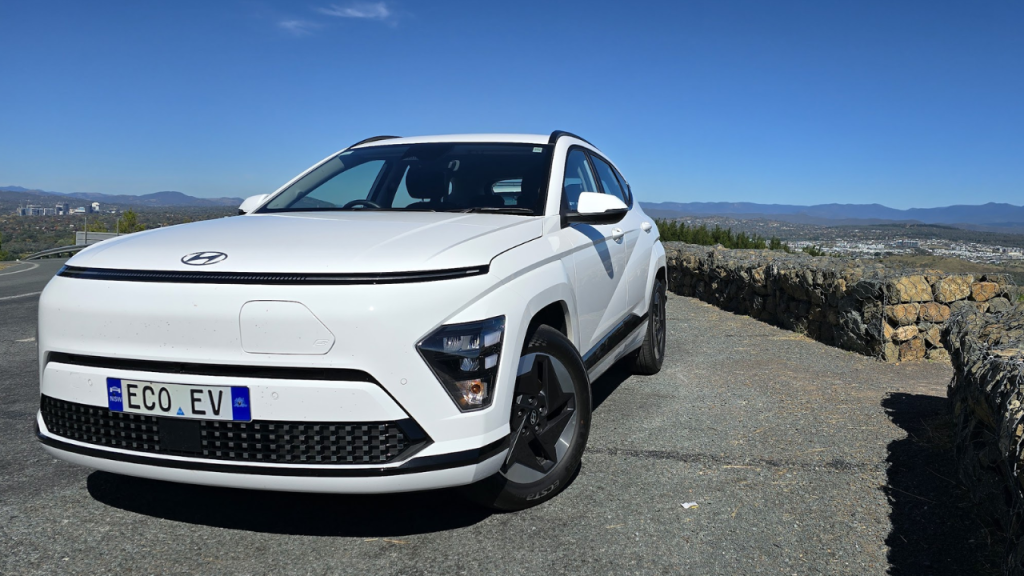
I’m Kona go
We had the base Hyundai Kona Electric – no add ons or extras, and not even an optional paint job. This yields you a comfortable, front-wheel drive car with a rated battery range of 370km WLTP. It’s a comfortably sized car that I’d call a small SUV, and while it does look quite nice from the front, it lacks all the style points that Hyundai’s ‘Ioniq’ EVs have.
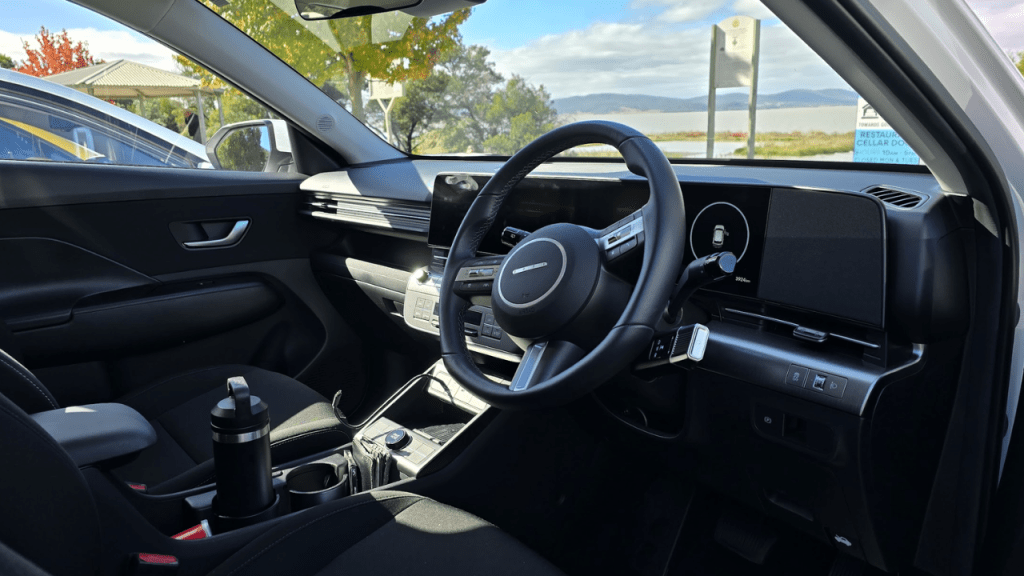
And at face value, for driving around a city, this is a perfectly fine car – especially if you’re not reliant on public charging and you’re just topping up the battery at home overnight. The car also has the best built-in OS when compared to any EV cheaper than it – an OS platform that’s shared with Hyundai’s Ioniq range and Kia’s electric models. The road feeling was fine (I would prefer a RWD to a FWD any day though), and the seats were comfortable. Acceleration felt sluggish even on the ‘Sport’ mode and it felt a bit heavy when turning, but overall, it’s an inoffensive thing to drive.
I also really love Hyundai’s button layout with the Kona. This is my happy place – it doesn’t feel touch screen-reliant at all.
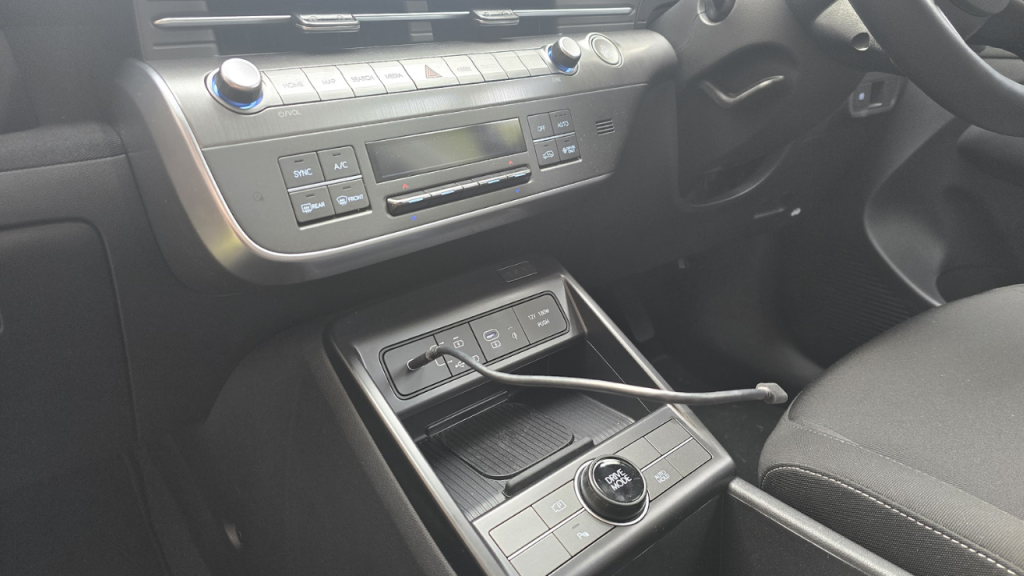
As soon as you take it beyond the city, however, you may run into some hiccups. The battery seems too small for the price. The closest car to compare the Kona Electric to is the MG ZS EV, another small electric SUV which offers a Long Range variant capable of 440km for $46,990. We weren’t particularly thrilled with the ZS EV back in 2022, but that was because the car had extremely limited range back then, and the Long Range variant was introduced shortly after (in fairness, the Long Range has a lower DC charging speed than the Kona, at 94kWh versus the Kona’s 100kWh). There’s also the BYD Atto 3, which also warrants a mention, though it is less competitively priced.
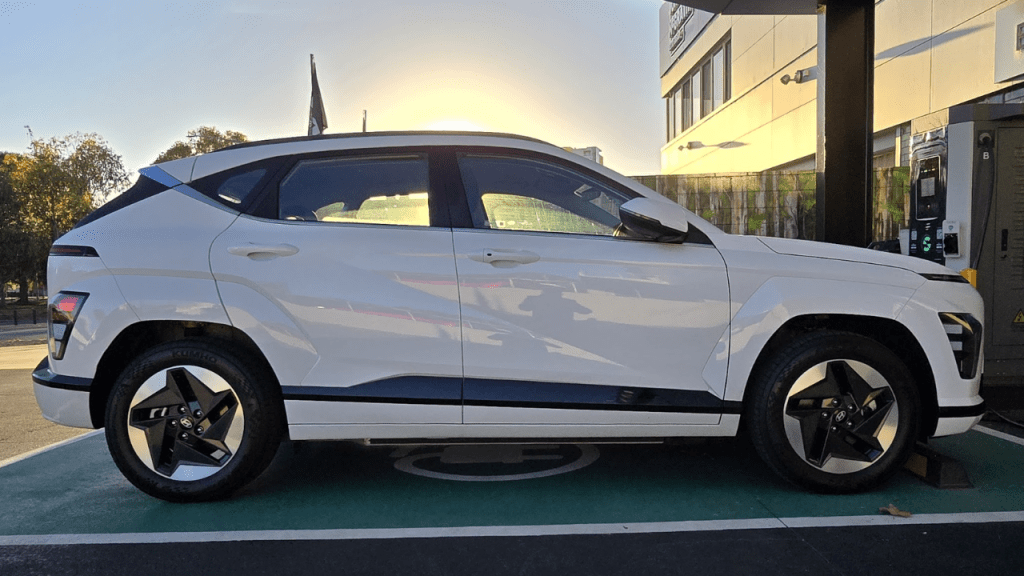
The base model offers a range of only 370km, but it’s a short walk to the ‘extended range’ model, which offers 505km range. Up from this is the ‘Premium’ trim, with 444km WLTP range and added features. All models are capable of 100kWh DC charging, which you might consider too slow for a road trip – I certainly do.
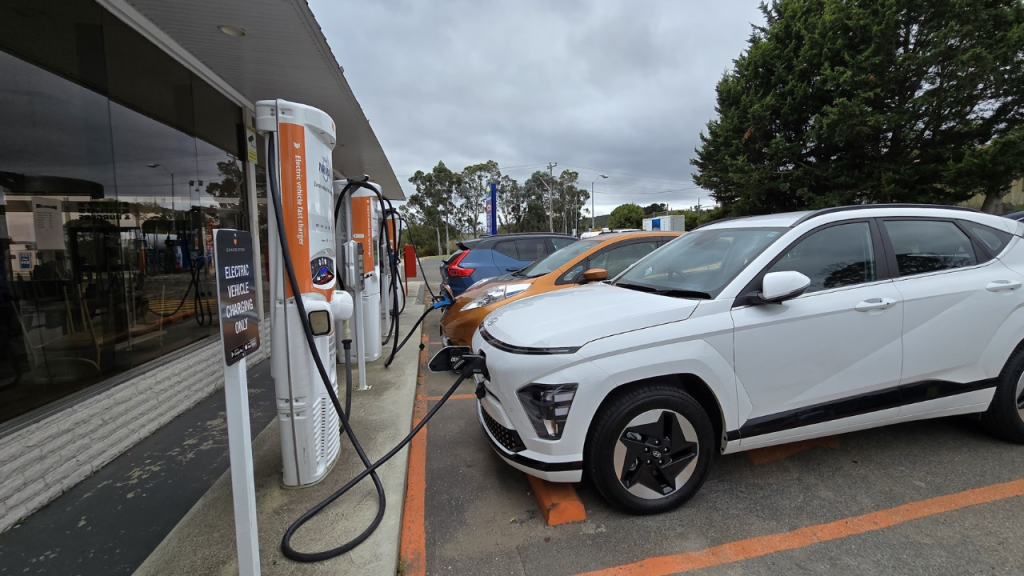
Kona go on a trip
If anything, my trip to Canberra in the Hyundai Kona Electric is a good example of needing to plan ahead before heading off. If I hadn’t planned ahead, I’d be in for a nightmare.
I started with 100 per cent charge, which with the EV’s rated 370km battery, should have gotten me to Canberra in one stint. However, as EVs typically underperform on highways (because they’re not regenerating battery life from braking), I eventually needed to charge in public for my own comfort. I charged up to 95 per cent, which took an hour at the Goulburn Chargefox 350kWh supercharger, because I didn’t want to be looking out for another charger when I got to Canberra.
Staying overnight at a friend’s house, I left early in the morning to charge at a nearby fast charger – an Exploren station rated at 150kWh. Again, I was here for an hour, and topped the car up to 94 per cent.
And then, finally, I stopped at the Sutton’s Forest Evie chargers for about 30 minutes, to get the car up to 80 per cent, to then comfortably cover the remaining trip back into Sydney.
(Side note: be prepared for frustration when using public chargers – the Evie chargers at Sutton’s Forest had limited phone network connectivity, which made it difficult to use the app, to begin charging the car and to pay for the charge. I eventually got it working with McDonald’s free Wi-Fi).
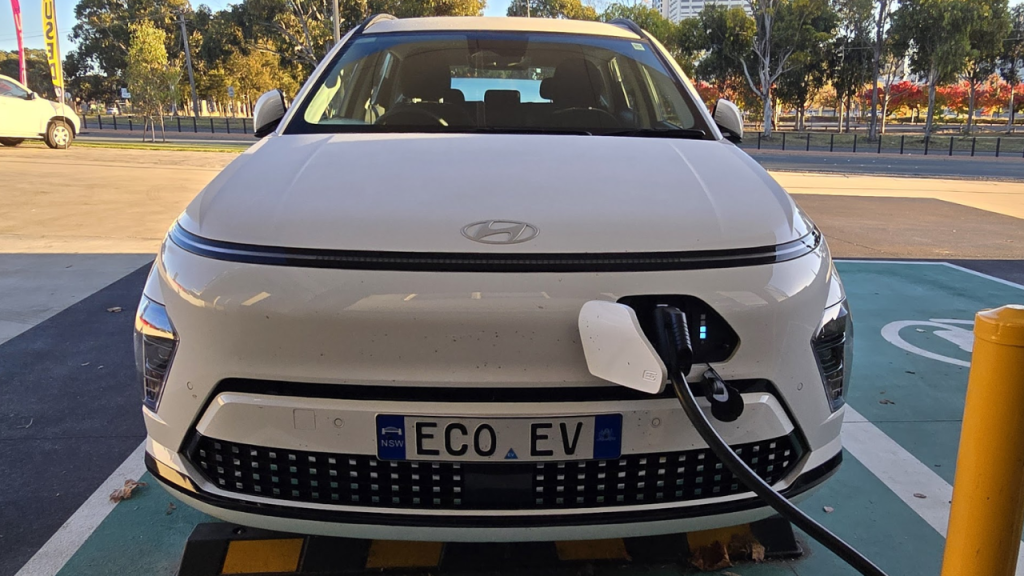
While the Hyundai Kona Electric is a comfortable car to drive and sit in, and it has a fairly premium look, this road-tripping experience was, unfortunately, quite lacking. A bigger battery would have obviously helped, but a faster charging speed would have also helped to cut down on public charging frustration – and when public chargers are such a hassle on their own, you can’t really afford for your road tripping car to also be a pain.
While the MG4 isn’t a small SUV (it’s a hatchback), it offers notably better performance in several areas over the Kona Electric, and for the lower price too, it’s worth considering.
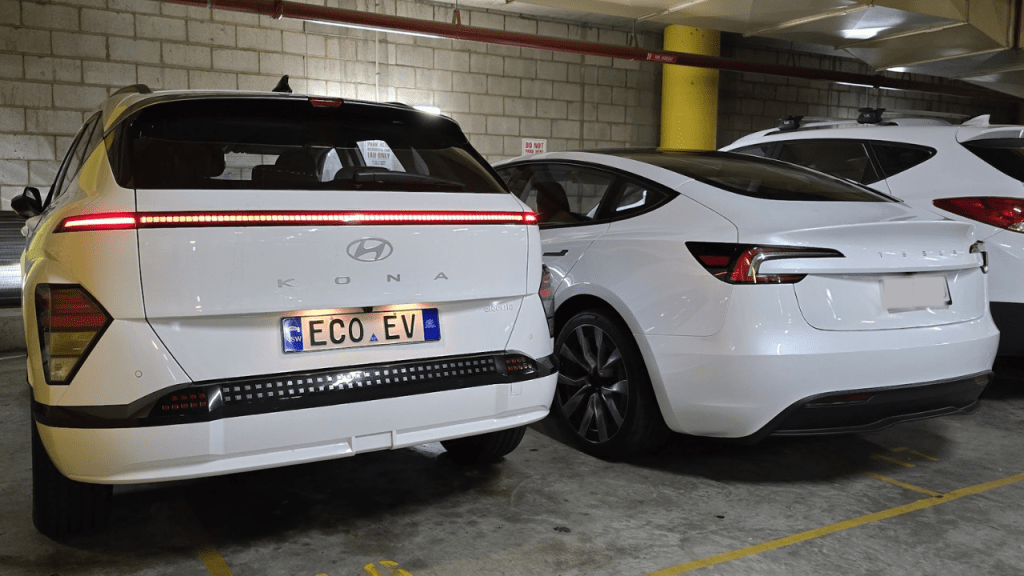
The MG4 offers 140kWh charging for all models except for the entry-level Excite 51 – and all models, bar one extremely impressive performance model, are priced well below the Hyundai Kona. Most models also offer greater range than the Kona, with the mid-level Excite offering 435km ($44,990), and the high-end Long Range offering 550km ($52,990).
Not that we’re undercutting the practicality of the MG4 by noting it’s a hatchback, mind you – that car offers 363 litres of boot space, or 1,165 litres with the back seats folded down. Smaller, but not insignificant against the Kona Electric’s 466 litres of boot space, or 1,300 when folded down.
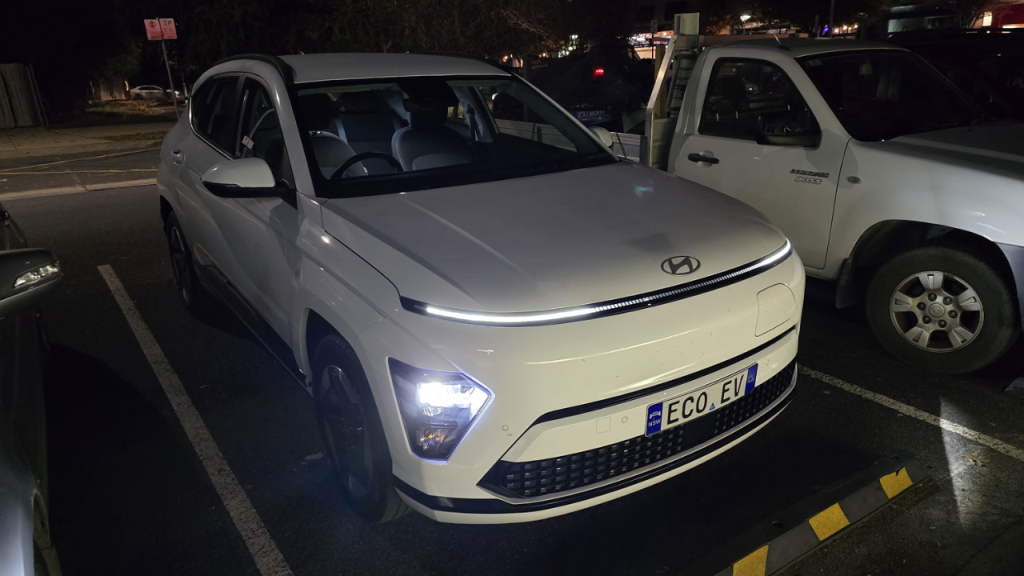
When it comes to battery range and charging, the Kona Electric isn’t a winner – and it’s not just MG that beats it. You’ll find similar results from other Chinese cars, such as the BYD Atto 3, BYD Dolphin, BYD Seal, and GWM Ora.
So you might be wondering then; ‘maybe the Kona Electric at least has better features?’ Well…sorta.
What is the higher price Kona get you?
The Hyundai Kona Electric comes with a 12.3-inch infotainment system, a rear-view camera, cloth seating, manual front seats, one-pedal driving, and safety features like lane-keep assist, lane following assist, adaptive cruise, and blind spot monitoring. These features come with the base model and the Extended Range variant.
The Premium adds subtle exterior and interior design changes, projector LED headlights, a birds-eye camera, side parking sensors, a heads-up display, a sunroof, leather seating, powered front seats with heating and ventilation, and a powered tailgate.

The feature package offered by the Premium model is considerable, but at the price you pay, you’d likely be considering a more premium car altogether – heck, you’d be spending more than for a base model Tesla Model Y, Volvo’s upcoming EX30 SUV, and even Hyundai’s entry-level Ioniq 5.
But the feature package doesn’t seem all that well-considered. ‘Essence’ model MG EVs come with 360 cameras and electric front seats, as does the BYD Atto 3. The powered tailgate is a worthwhile addition, as is the sunroof, but beyond these things, I feel like I’m safe to assume many of these things on a car as expensive as the base Kona EV.
The BYD and MG also offer lane assistance on base models and up, though I will say that Hyundai’s lane assistance is my preference – it just feels much more confident on the road. Adaptive lane keeping, lane following, and blind spot monitoring are also standard on much cheaper alternatives.
At the very least, the Kona Electric does feel nicer to be inside than the MG4. The MG4 was criticised for how boring its interior was, and the Kona’s is a lot more sporty and interesting. It also doesn’t feel as extra as the Atto 3’s interior.
And, how could we forget? The Kona comes with a spare wheel – something almost every other EV in Australia simply doesn’t have. That might be enough to impress you, simply for the ‘have it and not need it’ factor, but I’m telling you – there’s better value to be had in getting a cheaper model, and buying a separate spare altogether for your boot.
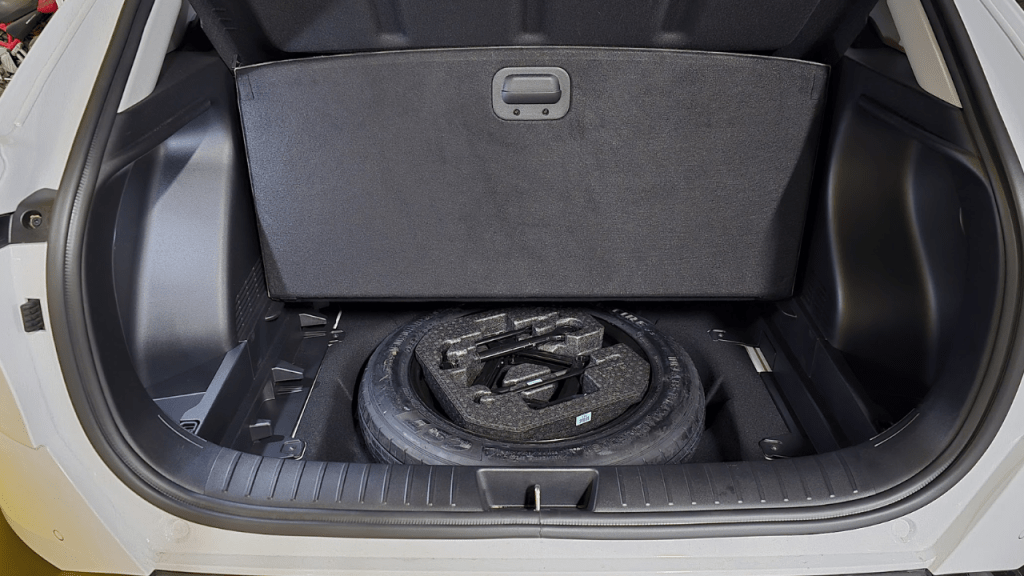
The verdict: Should you buy the Hyundai Kona Electric?
I love the Hyundai Kona Electric for the things it does well – such as the OS, the spare tyre, and its interior design – but it’s not the value winner for drivers. I would highly recommend shopping around the price point of the Kona, for you might find an EV that satisfies you more.
Of the three in the line-up, I think the Extended Range variant makes the most sense for most drivers, while the base model is an interesting alternative to cheaper EVs. The Premium, meanwhile, just seems strategically priced to upsell drivers to the mid-range Ioniq 5 – which I would recommend over this car. On its own though, the Kona Electric might just be the option for some drivers that are after a less flashy, more familiar interior.
The Hyundai Kona Electric is not a bad car. It’s just poorly positioned against better-value options.
The Hyundai Kona Electric starts at $54,000 in Australia. The Extended Range variant is priced at $58,000, and the Premium at $68,000.
Image: Zachariah Kelly/Gizmodo Australia
